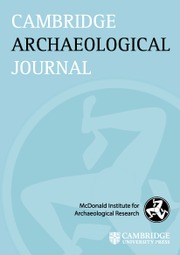Article contents
From Chaîne Opératoire to Observational Analysis: A Pilot Study of a New Methodology for Analysing Changes in Cognitive Task-Structuring Strategies Across Different Hominin Tool-Making Events
Published online by Cambridge University Press: 25 October 2016
Abstract
The chaîne opératoire (CO) approach is a well-established method for the analysis of tool creation, use and discard, and associated cognitive processes. Its effectiveness in respect of cognition, however, is occasionally challenged. We briefly review key critiques of its epistemological and methodological limitations and consider alternative options. We suggest a new epistemological position and methodology which can link CO with alternative cognitive models and with the true complexity inherent in the stone tool archaeological record. Perception-action and embodied cognition theory are the proposed foundations of a new epistemology that allows us to reject the concept of thought processes underlying tool-making sequences as static entities selected from memory. Instead, they are described as arising, changing and flowing with and through bodily activity, or as the products of constant interaction between body, mind and environment. They are better understood as ongoing processes of situated task-structuring rather than as objectified concepts or symbols. The new methodology is designed to analyse individual tool-making processes rather than their products. We use a pilot study to explore how it can highlight variations in the gestural processes that structure different technologies and thus indicate potential differences in the associated cognitive strategies of the various tool-makers concerned.
- Type
- Research Article
- Information
- Creative Commons
- This is an Open Access article, distributed under the terms of the Creative Commons Attribution licence (http://creativecommons.org/licenses/by/4.0/), which permits unrestricted re-use, distribution, and reproduction in any medium, provided the original work is properly cited.
- Copyright
- Copyright © McDonald Institute for Archaeological Research 2016
- 14
- Cited by


